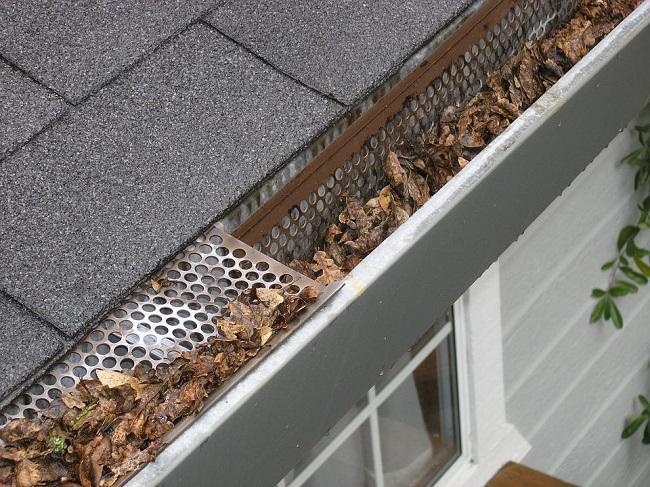This DIY tutorial will show you how to clean all varieties of guttering, including plastic gutters, metal gutters, and seamless gutters. This should demonstrate how to remove leaf litter and other material that might clog gutters and impair their capacity to adequately drain precipitation. You will also learn how to keep your gutters in decent shape and make repairs.
You don’t want to do it yourself? Let us assist you in locating a local tradesman. Click here.
The gutters that surround your home’s roof are critical to the overall functionality of your roof in terms of how effectively rainfall is carried away from your home before it may cause damp difficulties caused by penetrating water and dampness.
Rain hits your roof and travels down it during storms and showers, eventually flowing into your gutters when it reaches the eaves. The water is then carried through the horizontal guttering sections until it reaches a downpipe, where it is discharged into your existing surface water drainage system.
A specialised surface water drain, a soakaway, or even a rainwater collecting system can be used.
If the guttering fails at any point during the above process, rainwater can easily find its way down onto the external walls and into the foundations of your home, and if the walls are not adequately protected or are damaged, rainwater can find its way into the cavity and then in through internal walls, causing damp and mould.
Furthermore, if your gutters become clogged with leaves and other debris, causing blockages, water can quickly overflow and leak onto your exterior walls.
With this in mind, I’m sure you understand how critical guttering is to the overall weatherproofing of your property, and how crucial it is to keep it in good working order to avoid damp concerns.
How Often Should My Gutters Be Cleaned?
In response to this query, the interval between gutter cleanings is determined by various factors, including where you reside and what surrounds your home.
You should clean them at least twice a year, at the end of spring and again around the end of autumn.
The main reason for this is that flowers and trees emit a lot of seeds and pollen in the spring, which can accumulate in gutter runs. This process slows down at the end of spring, so you’ll want to clean them now rather than later because you’ll have to clean them again in a month or so.
This is especially true in the fall when the leaves and greenery begin to fall. If your home is surrounded by a lot of trees, clean your gutters when they are completely bare to ensure that you have removed as much leaf matter as possible.
This is obviously merely a crude guide. If you have a lot of rain and water flowing over your gutters in the early spring, you’ll need to go up there and clean them right away!
Rain and wind are experienced in almost every part of the UK, especially in the north. Large amounts of rain combined with fast breezes can easily remove moss on your roof and blow leaves off trees, so check and clean your gutters 3 to 4 times a year if this is the case where you live.
Furthermore, as we briefly said above, if you are surrounded by trees and other plants, you will naturally be more prone to blocked gutters due to the volume of water present.
Cleaning Guttering from a Ladder
After determining how often you should clean your gutters, the next step is to get started.
Ladder Security
Cleaning gutters is not a pleasant task in any way. It’s a filthy, stinky, and occasionally unpleasant job.
You’ll be cleaning guttering on a two-story property unless you have a bungalow or a single-story home, which entails working at heights.
Please do not undertake this job if you are not comfortable working at heights; instead, hire an expert.
If you are comfortable working at a height, though, you are ready to go.
The first step is to set up your ladder. To do so, choose a starting point and place the ladder there.
Make sure the ladder’s feet are firmly set on a sturdy, level foundation. Don’t try to put it on grass or a hill; it will either sink and become unstable, or it may strike out from the bottom, causing you to tumble!
Most gutters are attached to fascia boards, which are then attached to the eaves, or part of the roof that overhangs the walls.
In this situation, comfortably accessing your gutters from a ladder can be difficult and risky because you will wind up leaning to obtain a decent view of your gutter.
Always utilise a ladder stay or ladder standoff to avoid any possible harmful leaning.
These extremely essential pieces attach to the top of your ladder and then rest on your property’s external wall, pushing the ladder away from the wall and enabling easy access to your gutters and roof.
